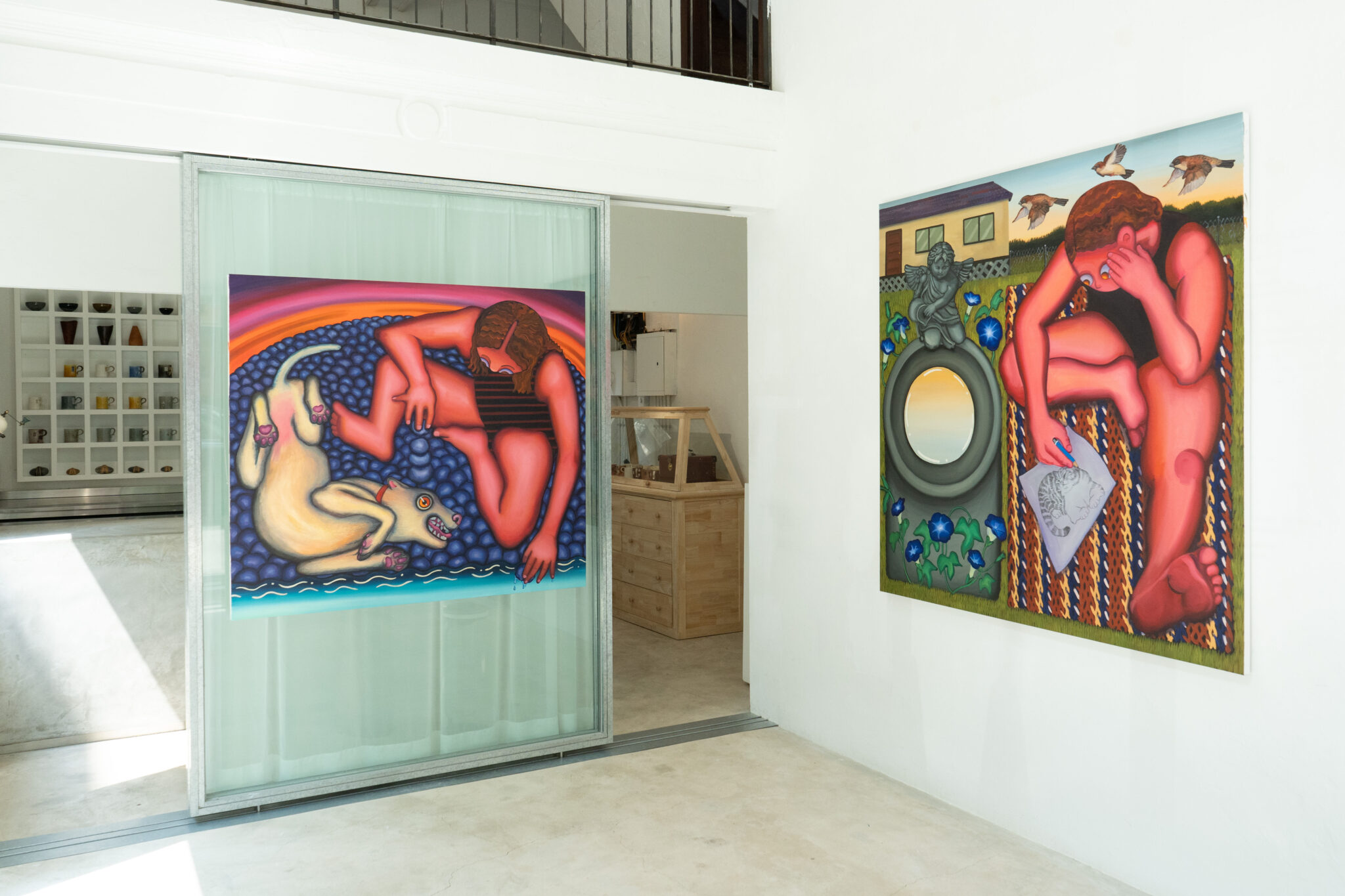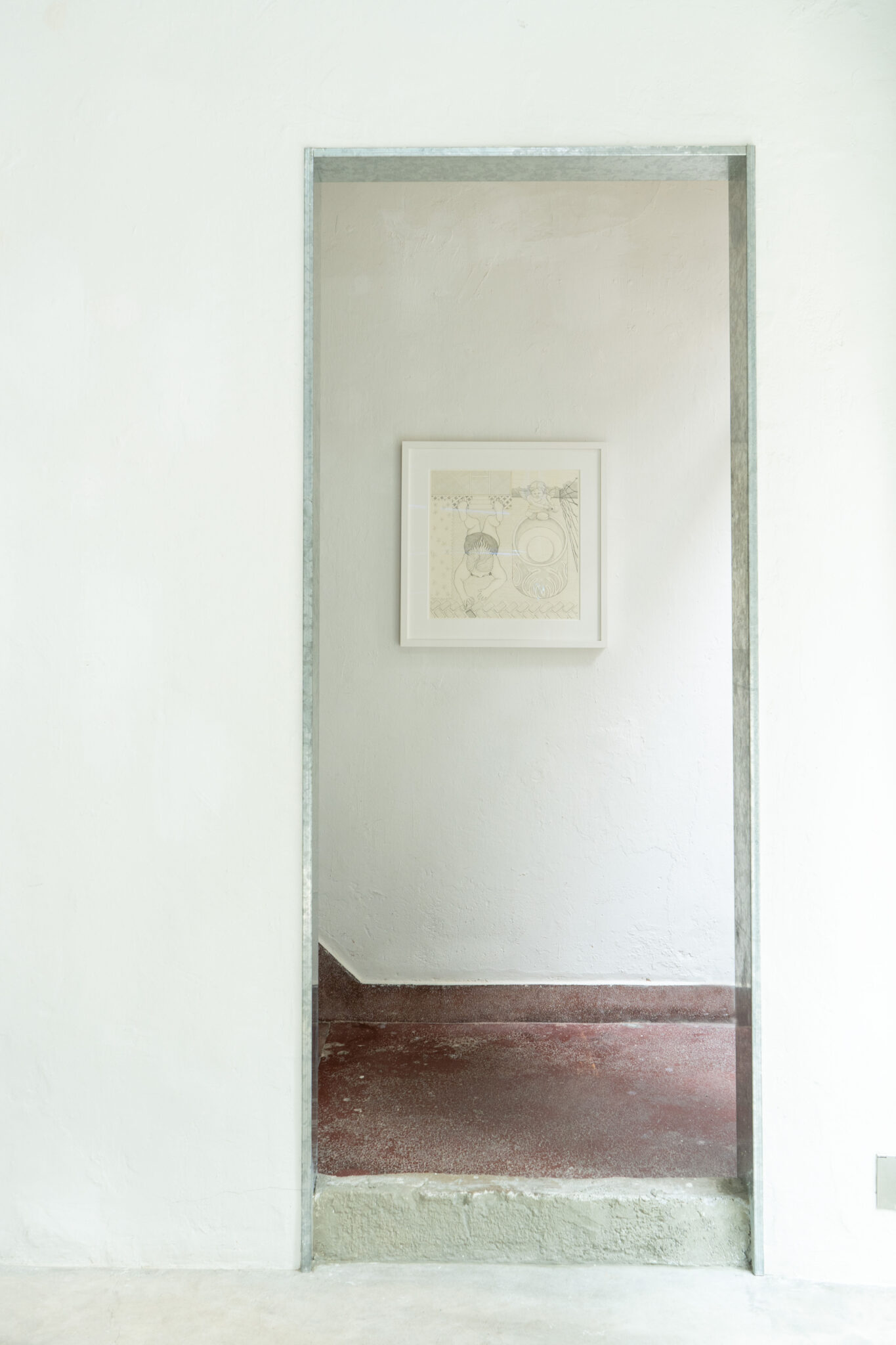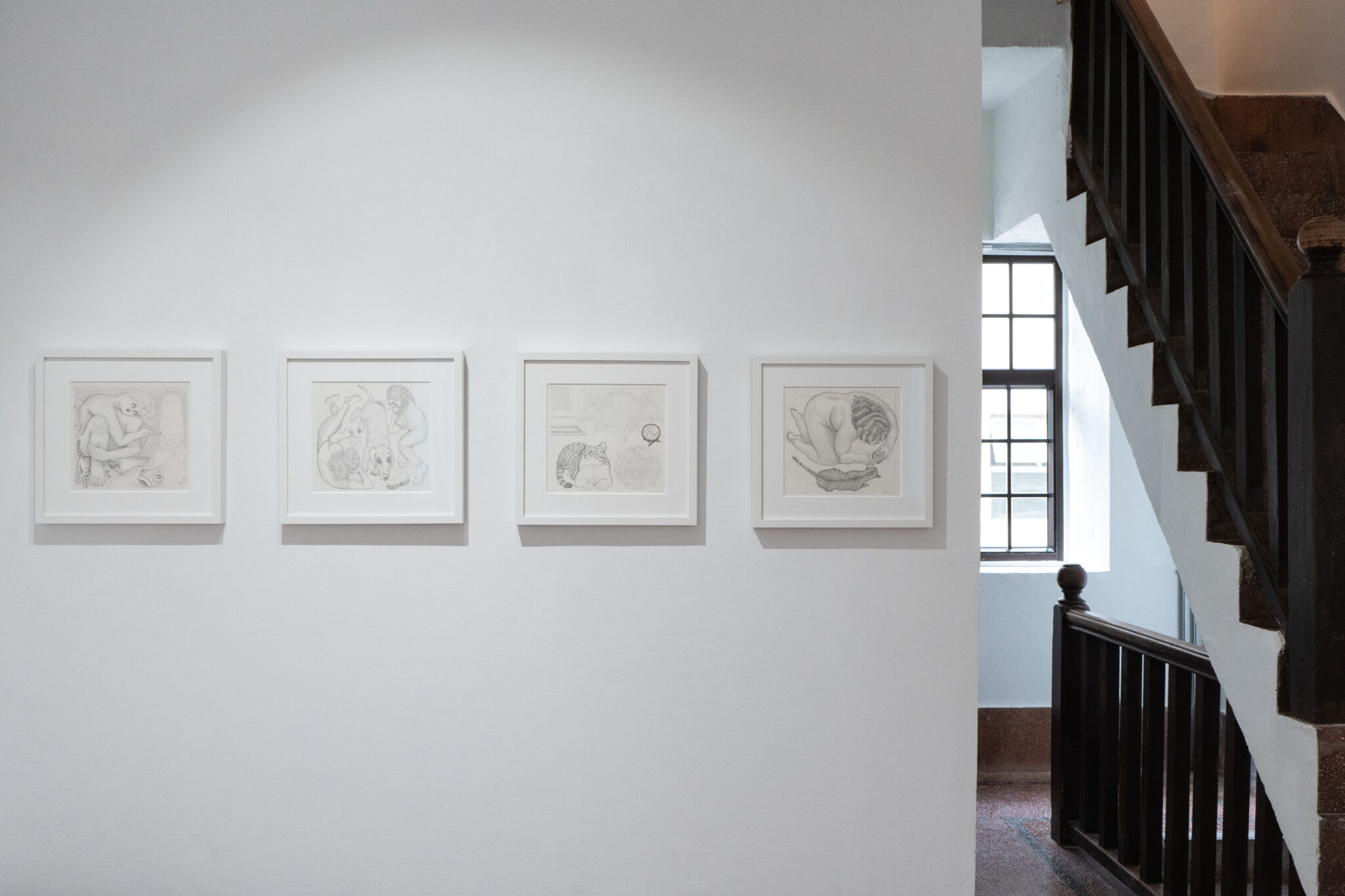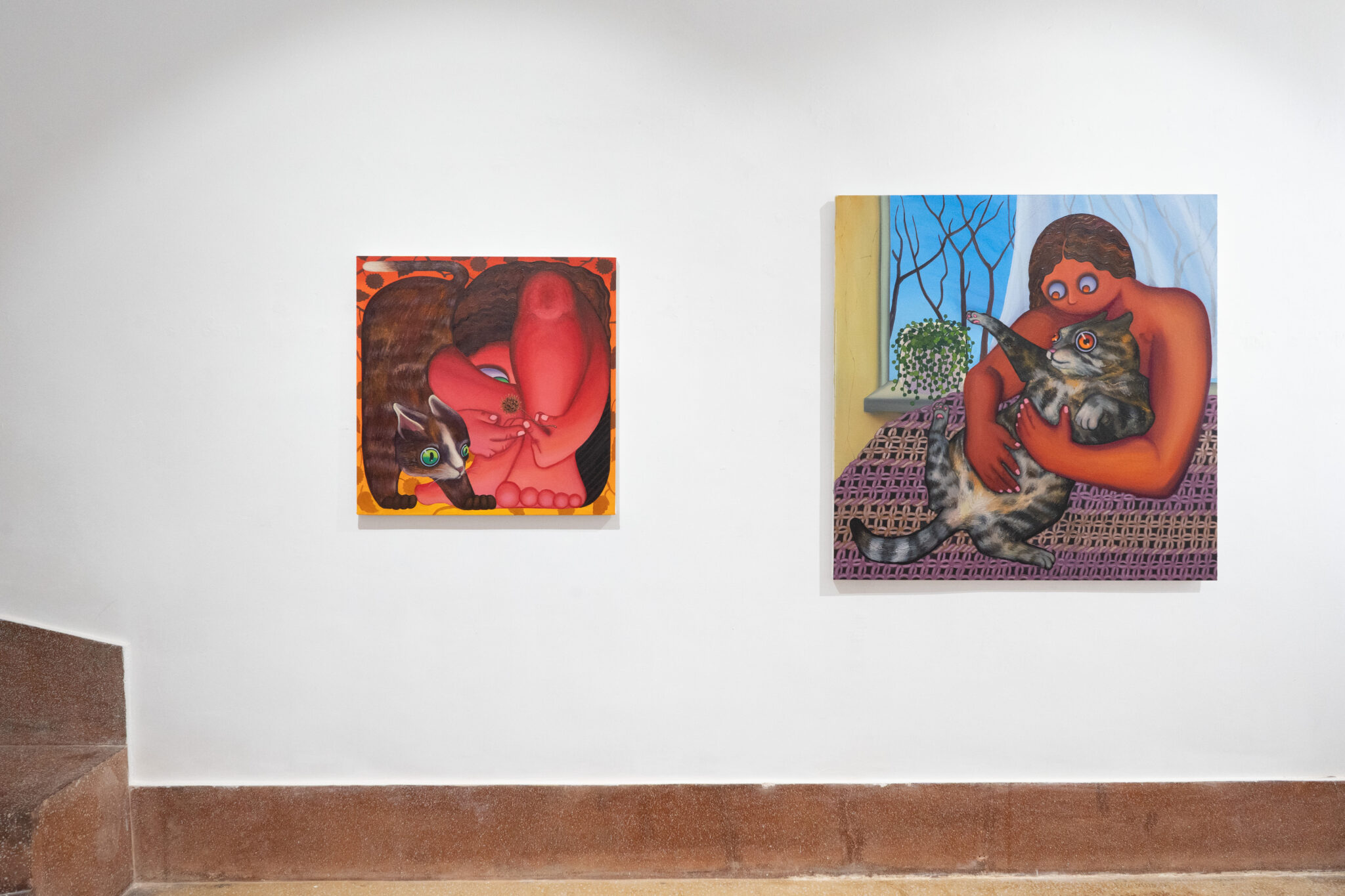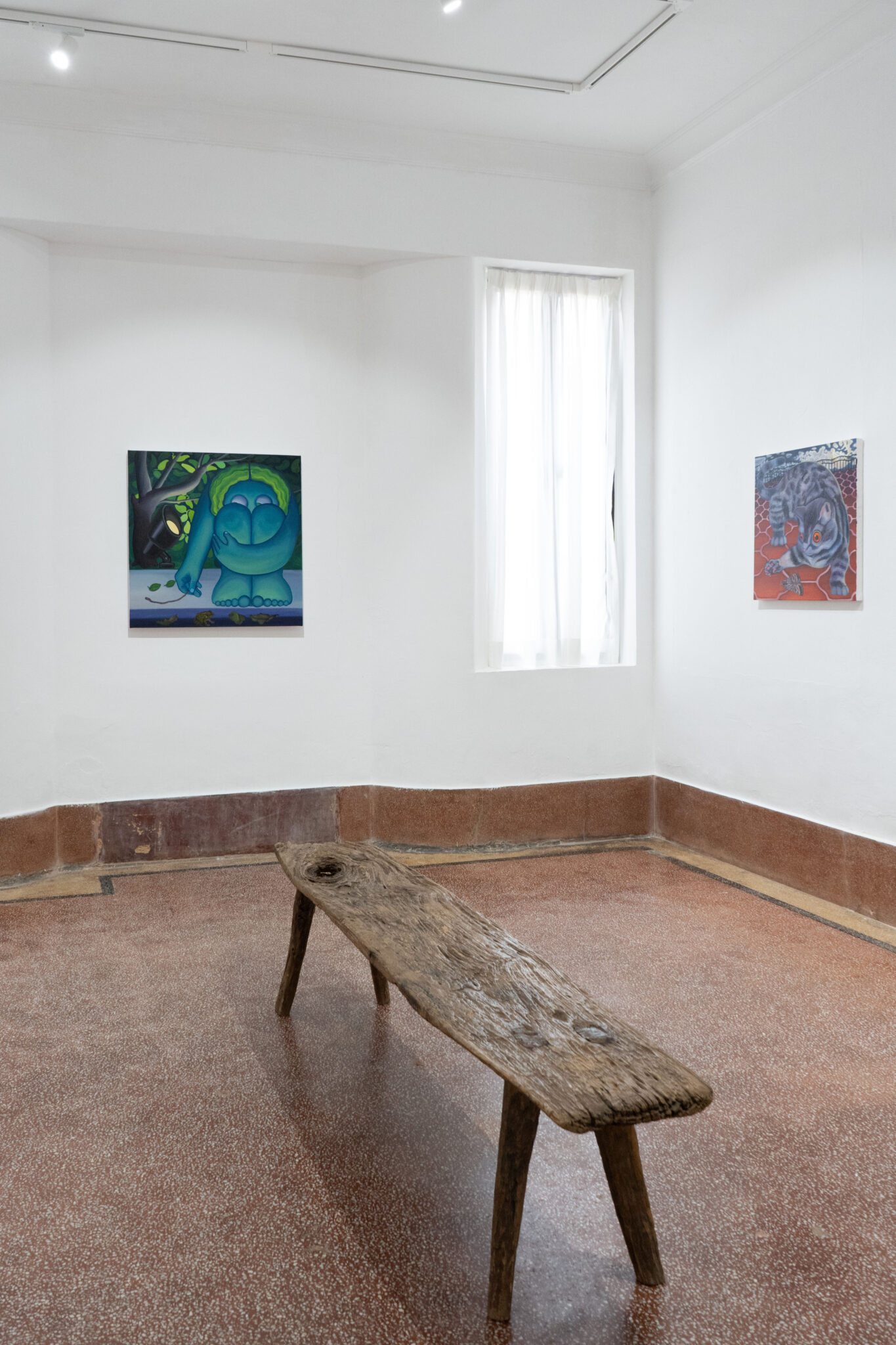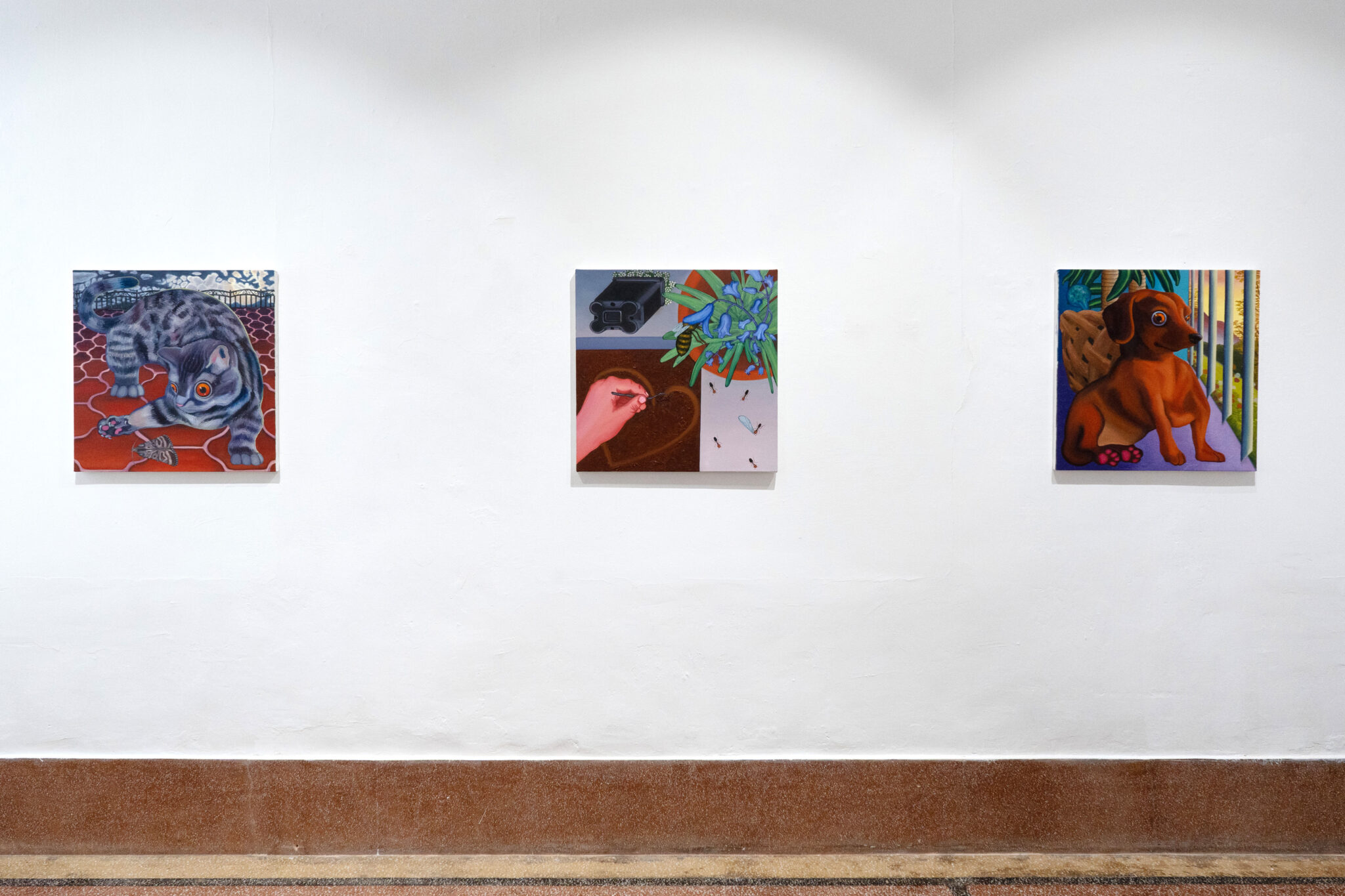Close to the Ground
THE SHOPHOUSE is pleased to present a new exhibition with New York-based artist Natalie Wadlington (b. 1992, Modesto, CA). In her paintings, Wadlington seeks to imbue each work with a strong and distinct mood—one of pensiveness, wonderment and uncertainty. This essence reflects the possibilities for both connection and misunderstanding that occur at the boundary between oneself and others, specifically in relation to domesticated animals and outdoor spaces. Presented in the exhibition is a series of eight paintings alongside a selection of works on paper that explore archetypal narratives of love, conflict and misjudgment in relationship to our natural environments and their inhabitants.
Influenced by the unique architecture and layout of the gallery which spans three floors of a former residential apartment complex, the exhibited paintings are smaller in size, however Wadlington maintains a practice of painting subjects and scenes at a 1:1 human scale. While Wadlington’s large-scale paintings present her audience with a scene that is “whole,” the featured pieces dial in on smaller moments and interactions within the overall plot, offering a more direct encounter between viewer and subject. Further, the time allotted to Wadlington by working at an intimate scale enabled her to place a greater focus on the details of each composition, such as building up texture or playing with hues. Continuing to explore the same themes of suburbia and anthropomorphism, Wadlington looked to this body of work partially as an opportunity to progress formal techniques.
Wadlington begins her paintings by generating digital collages using a combination of photos she has taken, elements from past paintings, and stock photos. Through these arrangements, she is able to approach her paintings with a strong understanding of compositional layout to guide their creation. Notably, Wadlington uses images of herself within these collages, modeling her own body to inform the poses of her subjects. To this end, while Wadlington’s paintings are not considered by the artist to be self portraits in the traditional sense, they are very much self reflections of lived experiences and felt emotions. As Wadlington explains: “[The subject] doesn’t necessarily have to be me, but the gesture of the figure has to be informed by something I’ve endured or experienced—that authenticity is important. I’m not telling stories about other people and what they do, I’m telling stories about things I’ve definitely felt, and then maybe other people can relate to that, too.” Honesty is the foundation of Wadlington’s practice, and manifests in her work through a nostalgia of child-like wonderment and reference of familiar surroundings.


